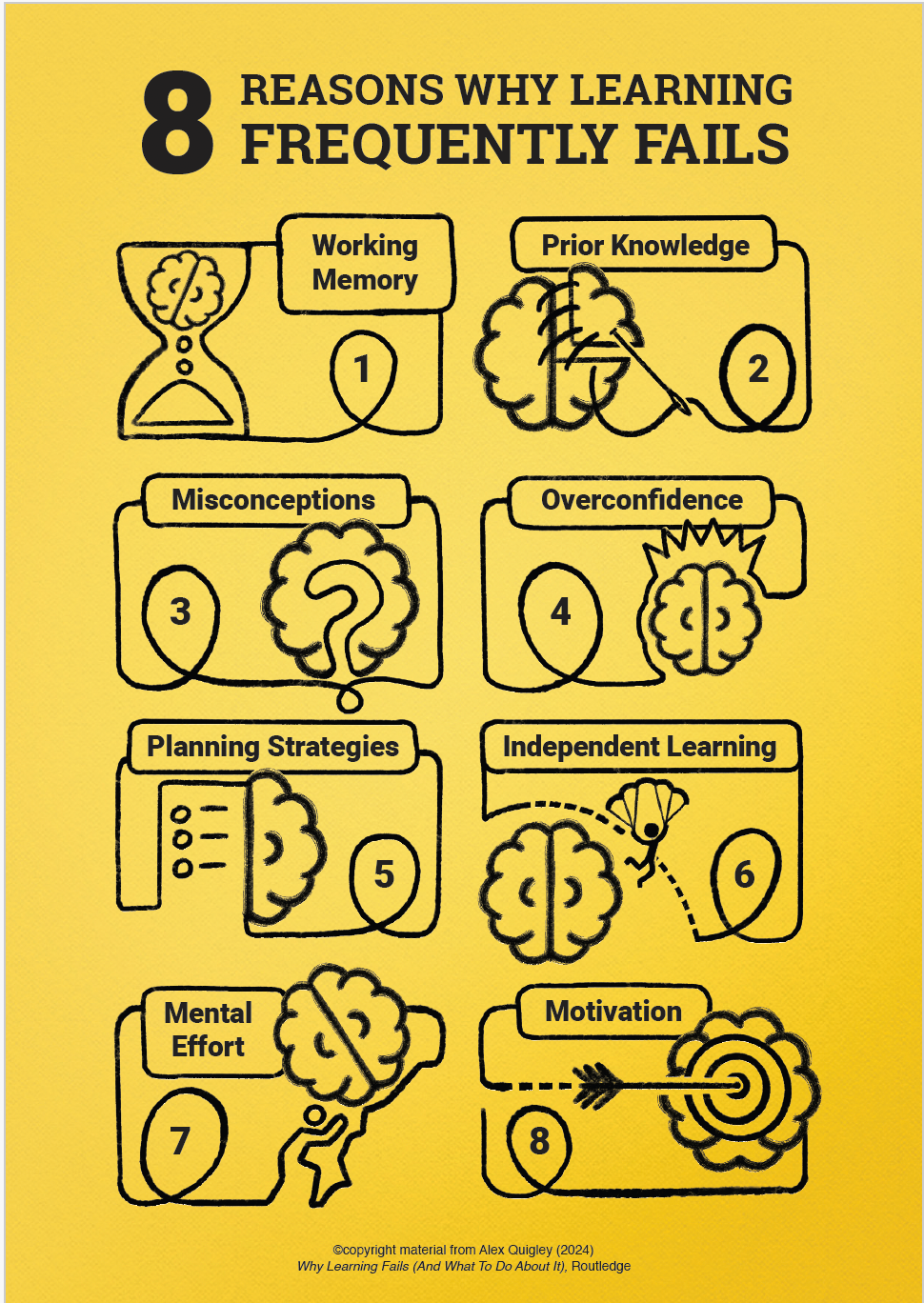If you want to guarantee clicks on an article or to sell a new product, a focus on failure is the last thing you’d do. People want success. Ideally, they want success quick, cheap, and easy. And yet, when it comes to securing success in classrooms, I think it is imperative that we focus more on learning failures and problems.
If we only focus on solutions – be they curriculum planning, oracy, or ‘cold calling’ – a busy teacher won’t be prepared when they inevitably go awry in the classroom. If we better understand the problems we are looking to solve, and the likely failures that attend learning, then we offer teachers a richer understanding of teaching and learning.
The late Mary Kennedy was a brilliant education professor from Michigan State, in the USA. She wrote about teaching and learning with rare sensitivity and wisdom – founded on working with teachers – which every teacher could appreciate and relate to.
In a paper she wrote – entitled ‘Parsing the Practice of Teaching’ – she explored the challenges of supporting teacher development. Crucially, she captured how we focus on solutions and not problems, and how we obsess over success but can ignore the reality of likely failures:
“When we do research, we seek solutions to problems, and when we teach, we teach about the solutions we have discovered over time. Even if our solutions change over time, they are always taught with certainty. Thus, at one time we teach teachers about direct instruction, at another we teach them how to use cooperative groups, at another we teach lesson study, and at yet another we teach core practices. These are all plausible solutions to one or more problems of practice, but we often fail to discuss the problems themselves. Instead, we present these solutions as if these are the only possibilities available. But what novices need to learn is that none of these solutions can repeatedly satisfy all of the persistent challenges they will face.”
Mary Kennedy, ‘Parsing the Practice of Teaching’
Focus on failure and persistent problems
Mary Kennedy characterises five persistent problems faced by every teacher:
1. Portraying the curriculum. I.e. ordering, sequencing, and presenting the curriculum as a comprehensible whole or as a developing story.
2. Enlisting student participation. I.e. ensure pupils are cooperating and focusing on the learning at hand – including a willingness to do some hard thinking!
3. Exposing student thinking I.e. eliciting formative assessment of what pupils know and can do, with strategies such as questioning, or discussion.
4. Containing student behaviour. i.e. the glaring reality that is ensuring that every pupil is behaving and following instructions and enacting routines.
5. Accommodating personal needs i.e. balancing all these other problems with your personal teaching style and needs.
Many of these will chime neatly with busy teachers grappling with the realities of teaching twenty-eight teens, and similar.
There have been other ways of conceiving of this vital focus on solving problems and fixing failures. Tom Sherrington has characterised common teaching problems in his usual accessible, perceptive style with his ‘Teaching Problems and Solutions. The TPS Collection’.
He describes ten problems to solve:
1. Knowledge gaps.
2. Covering a class (substitute teacher).
3. Wide ability range!
4. How can parents help with learning and revision?
5. How do I adapt material for a wide ability range?
6. How do I engage passive learners?
7. How do I handle a misogynistic group of boys…?
8. How do I manage a congested curriculum?
9. How can I work most effectively with a teaching assistant in my lessons?
10. How do I manage a class when a bee enters the room?
There are clear parallels with Kennedy and Sherrington’s teaching and learning problems. One distinctive difference though is what Kennedy calls – 'grain size' – that is to say, how big or how wide ranging the problem. ‘Portraying the curriculum’ is massive, but ‘adapting material for a wide ability range’ and ‘managing a congested curriculum’ can fit underneath that wider problem. Usually we need both - understanding the big picture challenge and ready to enact the granular problems that arise daily.
I wholly agree with Kennedy and Sherrington – we need to be more specific about the problems we are seeking to solve with our latest teaching and learning strategy solutions. In my latest book, ‘Why Learning Fails (And What To Do About It)’, I characterise eight common failures why learning frequently fails:
1. The narrow limits of working memory
2. Patchy prior knowledge
3. The nagging nature of misconceptions
4. A curious case of overconfidence
5. Faulty planning strategies
6. An inability to learn independently
7. Wandering attention and miserly mental effort
8. Falling motivation in the face of failure.
You can read my short explainers of these eight failures HERE.
[See the infographic below – and download a free PDF copy on my Resources page]

The structure of my book is ‘problem > solution’ for all the aforementioned reasons. If our focus is curriculum design, we need to first address failures of our limited working memory, patchy prior knowledge and misconceptions. If the focus is ‘Cold calling’, then understanding the failures of wandering attention or overconfidence are essential to understand if we are to enact the strategy with adaptive expertise.
My hope is that teacher development, discussions, and debates become less led by the latest popular 'solution' (which can bubble into a fad), and instead become more focused on solving the problems that teachers really care about addressing.
With the ultimate aim of securing teaching and learning success, let’s focus more on our problems and pursue fixing our learning failures.
Order from Amazon now HERE
Order from Routledge now HERE.






Comments